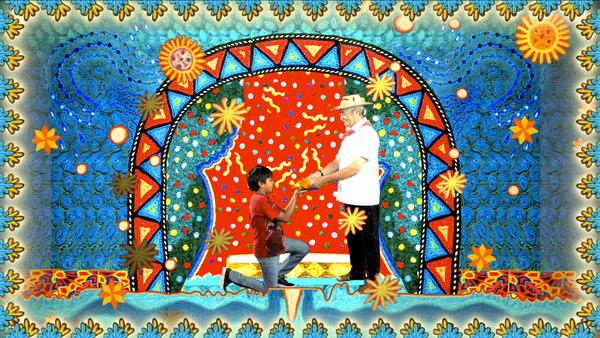“Was it all a Dream?
Chicanx Children and Mestiza Consciousness in Super Cilantro Girl (2003) and Tata's Gift (2014)”Voices of Resistance: Interdisciplinary Approaches to Essays on Chican@ Children's Literature, Eds. Laura Alamillo; Larissa M. Mercado-Lopez & Cristina Herrera, Rowman & Littlefield, 2018.

I started my career teaching Spanish in public schools, and found that some of the most effective ways to teach language and culture was through storytelling.
Finding authentic stories by Latinx and Latin American authors to present to my students was my priority, yet it was surprisingly difficult to find literature in Spanish or Spanglish that was not a direct translation of “mainstream” children’s classics. This has been changing for several years now, and it’s even really awesome that my uncle, Pablo Cartaya is an award-winning Latino young-adult’s author.
Early on in my doctoral degree, I started developing ways to critically engage with books and media that were “meant for kids,” but in fact needed to be taken quite seriously as political activism through dreaming, expression, play, and radical action.
Working on this project could not have come at more critical time when controversial legislation that targeted Chicanx and Mexican American youth began cropping up including the Ban on Tuscon, Arizona’s Ethnic Studies Curriculum, and the increasing visibility of DREAMers and DACA recipients while deportations happened everyday.
The great Gloria Anzaldúa’s words echo in my mind:
“Caminante, no hay puentes, se hace puentes al andar.”
This act of bridging worlds through movement -- across lands, between dreaming and reality, humans and nature, magic and technology -- this notion is narratively and visually developed in both of the works that I wrote about that are part of the multicultural children’s genre: Super Cilantro Girl (Juan Felipe Herrera) and Tata’s Gift (Dionisio Ceballos).
A year and a half later, I saw my words in print alongside an impressive collection of essays about Youth Activism, Pedagogy, and Chicano Children’s literature. I was honored as well that the author of Super Cilantro Girl, Juan Felipe Herrera, wrote the introduction to the volume.
︎︎︎ Purchase the book here
︎︎︎ More writing & publications